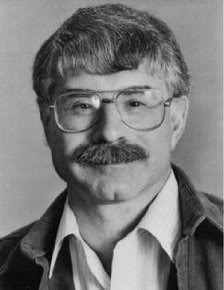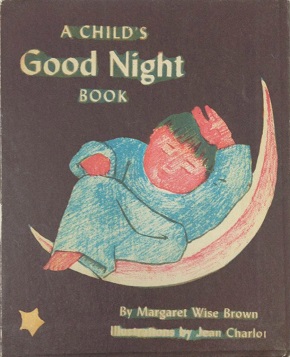
A picture book combines visual and verbal narratives in a book format, most often aimed at young children. With the narrative told primarily through text, they are distinct from comics, which do so primarily through sequential images. The images in picture books can be produced in a range of media, such as oil paints, acrylics, watercolor, and pencil. Picture books often serve as pedagogical resources, aiding with children's language development or understanding of the world.

Why Mosquitoes Buzz in People's Ears: A West African Tale is a 1975 children's picture book by Verna Aardema and illustrated by Leo and Diane Dillon. Published in hardcover by Dial Books for Young Readers, an imprint of Penguin Random House, it is told in the form of a cumulative tale written for young children, which tells an African legend.

Ingri d'Aulaire and Edgar Parin d'Aulaire were American writers and illustrators of children's books who worked primarily as a team, completing almost all of their well-known works together. The couple immigrated to the United States from Europe and worked on books that focused on history such as Abraham Lincoln, which won the 1940 Caldecott Medal. They were part of the group of immigrant artists composed of Feodor Rojankovsky, Roger Duvoisin, Ludwig Bemelmans, Miska Petersham and Tibor Gergely, who helped shape the Golden Age of picture books in mid-twentieth-century America.
Elizabeth Orton Jones was an American illustrator and writer of children's books. She won the 1945 Caldecott Medal for U.S. picture book illustration, recognizing Prayer for a Child, after being a runner-up one year earlier.

Arnold Stark Lobel was an American author of children's books, including the Frog and Toad series and Mouse Soup. He wrote and illustrated these picture books as well as Fables, a 1981 Caldecott Medal winner for best-illustrated U.S. picture book. Lobel also illustrated books by other writers, including Sam the Minuteman by Nathaniel Benchley published in 1969.
Alice Rose Provensen and Martin Provensen were an American couple who illustrated more than 40 children's books together, 19 of which they also wrote and edited. According to Alice, "we were a true collaboration. Martin and I really were one artist."

Feodor Stepanovich "Rojan" Rojankovsky, also known as Rojan, was a Russian émigré illustrator. He is well known both for children's book illustration and for erotic art. He won the 1956 Caldecott Medal for U.S. picture book illustration from the American Library Association, recognizing Frog Went A-Courtin' by John Langstaff.

Dorothy Pulis Lathrop was an American writer and illustrator of children's books.

Ox-Cart Man is a 1979 children's book written by Donald Hall and illustrated by Barbara Cooney. It won the 1980 Caldecott Medal. The book tells of the life and work of an early 19th-century farming family in New Hampshire. The father uses an ox-cart to take their goods to market in Portsmouth, where they make the money to buy the things they need for the next year. Even the ox and cart are sold.

A Tree is Nice is a children's picture book written by Janice May Udry and illustrated by Marc Simont. It was published by Harper and Brothers in 1956, and won the Caldecott Medal in 1957. The book tells Udry's poetic opinion on why trees are nice:
"Trees are pretty. They fill up the sky. If you have a tree, you can climb up its trunk, roll in its leaves, or hang a swing from one of its limbs. Cows and babies can nap in the shade of a tree. Birds can make nests in the branches. A tree is good to have around. A tree is nice."

Time of Wonder is a 1957 children's book written and illustrated by Robert McCloskey that won the Caldecott Medal in 1958. The book tells the story of a family's summer on a Maine island overlooking Penobscot Bay, filled with bright images and simple alliteration. Rain, gulls, a foggy morning, the excitement of sailing, the quiet of the night, and the sudden terror of a hurricane are all expressed in this book. This was McCloskey's second Caldecott, the first being Make Way for Ducklings in 1942.

White Snow, Bright Snow is a 1947 book written by Alvin Tresselt and illustrated by Roger Duvoisin. Released by Lothrop Publishers, it was the recipient of the Caldecott Medal for illustration in 1948.

The Big Snow is a book by Berta and Elmer Hader. Released by Macmillan Publishers, it was the recipient of the Caldecott Medal for illustration in 1949.

Cinderella, or the Little Glass Slipper is a book adapted and illustrated by Marcia Brown. Released by Charles Scribner's Sons, the book is a retelling of the story of Cinderella as written by Charles Perrault, and was the recipient of the Caldecott Medal for illustration in 1955. The book takes place in France, in a palace similar to other Cinderella stories.

Noah's Ark is a children's picture book written and illustrated by Peter Spier, first published by Doubleday in 1977. The text includes Spier's translation of "The Flood" by Jacobus Revius, a 17th-century poem telling the Bible story of Noah's Ark. According to Kirkus Reviews, the poem comprises sixty three-syllable lines such as "Pair by pair". "Without revising or even enlarging on the old story, Spier fills it in, delightfully." In a retrospective essay about the Caldecott Medal-winning books from 1976 to 1985, Barbara Bader described the book as "at once elaborate and feeble" and Revius' poem as "neither particularly suited to children nor eloquent in itself."

Saint George and the Dragon is a book written by Margaret Hodges and illustrated by Trina Schart Hyman. Released by Little, Brown, it was the recipient of the Caldecott Medal for illustration in 1985. The text is adapted from Edmund Spenser's epic poem The Faerie Queene.

The Little Island is a book by Margaret Wise Brown under the pseudonym Golden MacDonald and illustrated by Leonard Weisgard. Released by Doubleday in 1946, it was the recipient of the Caldecott Medal for illustration in 1947. It describes the four seasons as experienced by a little island. The book is lyrically written, an example being: "Winter came/ and the snow fell softly/ like a great quiet secret in the night/ cold and still."

The House in the Night is a children's picture book written by Susan Marie Swanson and illustrated by Beth Krommes. Published in 2008, the book is a bedtime verse about the light in a house during the night. Krommes won the 2009 Caldecott Medal for her illustrations.

Small Rain: Verses From The Bible is a 1943 picture book by James Orton Jones and illustrated by Elizabeth Orton Jones. The book has illustrated verses from the King James Bible. The book was a recipient of a 1944 Caldecott Honor for its illustrations.

A Child's Good Night Book is a 1943 picture book by Margaret Wise Brown and illustrated by Jean Charlot. Children and animals settle down for the night. The book was a recipient of a 1944 Caldecott Honor for its illustrations.


















